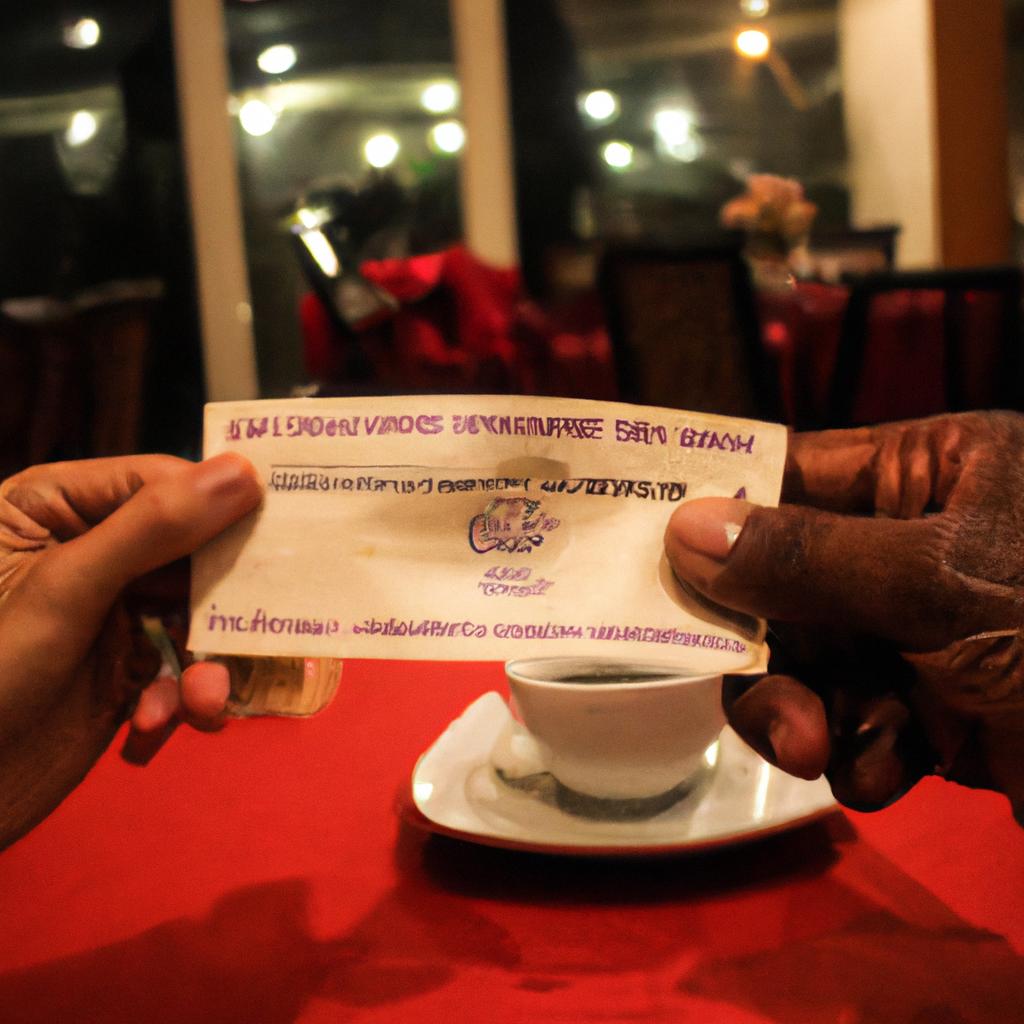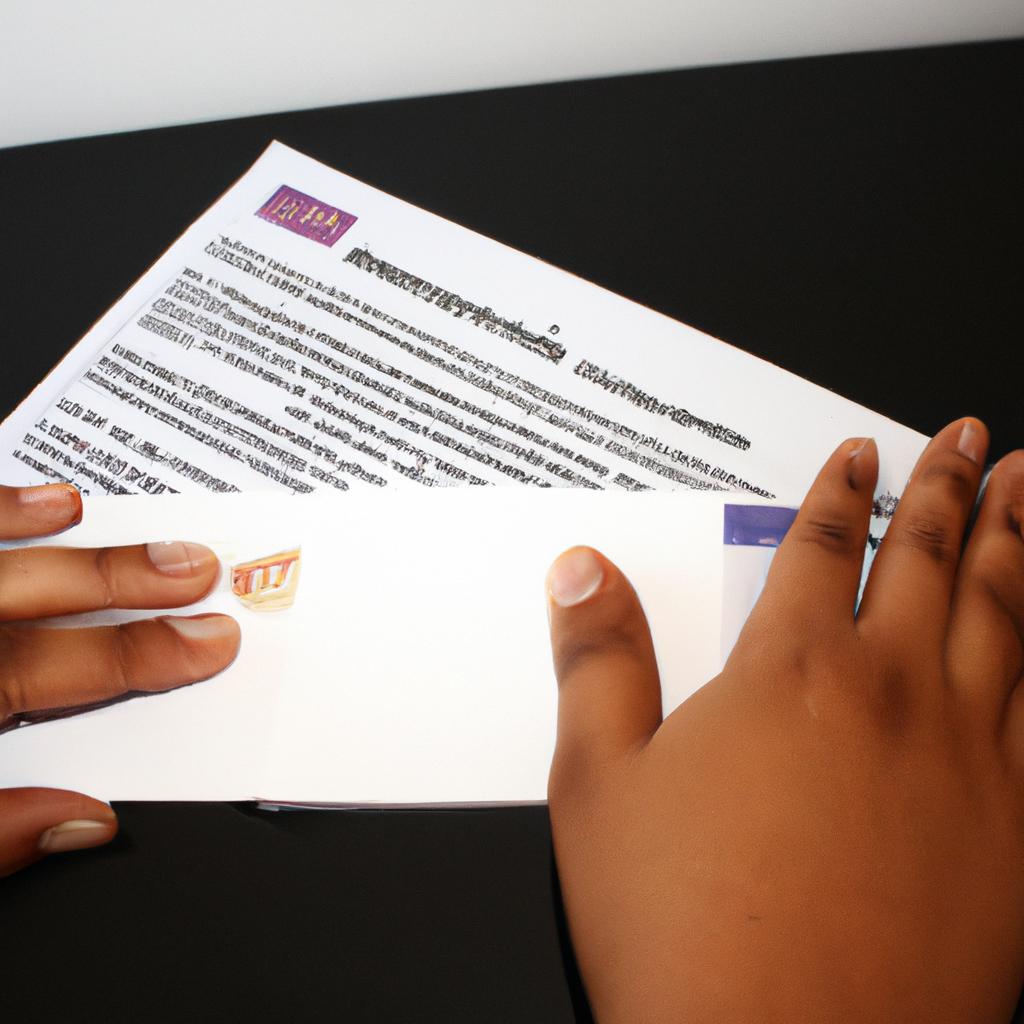Budget planning is a crucial aspect of managing any business, and this holds particularly true for bar and grill restaurants. The unique nature of these establishments requires careful consideration of various components such as food costs, labor expenses, marketing strategies, and operational overheads. To illustrate the importance of effective budget planning in this context, consider the hypothetical case study of “Grill & Chill,” a newly established bar and grill restaurant aiming to maximize profitability while providing an exceptional dining experience.
In order for Grill & Chill to thrive in a competitive market, it is vital for them to allocate their financial resources wisely. This article aims to guide bar and grill owners through the intricacies of budget planning by providing insights into obtaining financial assistance. By taking advantage of available funding opportunities, restaurant entrepreneurs can not only ensure smooth operations but also invest in essential areas such as menu development or technology upgrades that enhance customer satisfaction. Additionally, understanding how to effectively manage cash flow allows for better decision-making when it comes to inventory management or staff scheduling – ultimately contributing to improved profit margins.
Considering the specific challenges faced by bar and grill restaurants, including fluctuating food prices and volatile consumer preferences, implementing an efficient budget plan becomes imperative. Through exploring potential avenues for financial support like loans or grants tailored specifically towards the bar and grill industry, Grill & Chill can mitigate the risks associated with these challenges and position themselves for long-term success.
One potential source of financial assistance for bar and grill restaurants is small business loans. These loans, offered by banks or other financial institutions, provide entrepreneurs with the capital needed to cover various expenses such as equipment purchases, renovations, or working capital. By carefully assessing their needs and developing a comprehensive business plan that highlights the potential for growth and profitability, Grill & Chill can increase their chances of securing a favorable loan.
Another avenue worth exploring is grants specifically designed for restaurant businesses. While grants may be more difficult to obtain compared to loans, they offer the advantage of not requiring repayment. There are various organizations that provide grants to support small businesses in the foodservice industry. Grill & Chill should research and identify grant opportunities at both local and national levels that align with their business goals and objectives.
In addition to external financial assistance, effective budget planning also involves optimizing internal resources. This includes closely monitoring food costs by regularly reviewing supplier prices, negotiating favorable contracts, and implementing efficient inventory management systems. Controlling labor expenses through accurate staff scheduling and training programs can also contribute significantly to cost reduction without compromising service quality.
Furthermore, marketing strategies play a crucial role in attracting customers to bar and grill establishments. Allocating a portion of the budget towards creative advertising campaigns, social media promotions, or loyalty programs can help increase brand visibility and customer engagement. It is essential for Grill & Chill to analyze the return on investment (ROI) of different marketing initiatives to ensure maximum impact within their allocated budget.
Lastly, operational overheads such as rent, utilities, insurance, licenses/permits must be factored into the budget plan. Negotiating competitive lease agreements or exploring shared kitchen spaces can help minimize rental costs. Energy-efficient appliances or waste management practices can also lower utility expenses in the long run.
Overall, successful budget planning for bar and grill restaurants involves a comprehensive approach that considers both external financial assistance and internal resource optimization. By meticulously analyzing their financial needs, exploring funding opportunities, monitoring expenses, and implementing effective marketing strategies, Grill & Chill can lay a solid foundation for profitability and growth in the highly competitive bar and grill industry.
Understanding the Financial Challenges
Bar and grill restaurants, like any other business, face unique financial challenges that require careful planning and management. One common challenge is managing cash flow effectively to ensure ongoing operations while meeting expenses such as rent, utilities, payroll, and inventory replenishment. For example, consider a hypothetical case study of a bar and grill restaurant located in a bustling downtown area. Despite its popularity among locals and tourists alike, the establishment struggles with inconsistent revenue streams due to seasonal fluctuations and unpredictable customer traffic.
To fully comprehend the financial challenges faced by bar and grill restaurants, it is essential to recognize some key factors contributing to their complexity:
- High startup costs: Establishing a bar and grill restaurant involves significant upfront investments in equipment, furnishings, licenses, permits, marketing campaigns, staff training, and initial inventory.
- Intense competition: The food service industry is highly competitive with numerous dining options available for customers. This competitiveness puts pressure on pricing strategies and profit margins.
- Fluctuating consumer preferences: Consumer tastes are ever-changing; therefore, successful establishments must continually adapt their menus to cater to evolving demands.
- Seasonal variations: Depending on location or regional factors, certain times of the year may experience higher or lower customer traffic levels than others. Consequently, this can impact revenue generation significantly.
These challenges highlight the importance of effective budget planning for sustainable success in the bar and grill restaurant industry. By anticipating potential obstacles and developing appropriate strategies to overcome them, businesses can improve their chances of survival amidst fierce competition.
Moving forward into our next section on “Identifying Available Funding Sources,” we will explore various avenues that aspiring entrepreneurs can leverage to obtain financial assistance for starting or expanding their bar and grill restaurants without compromising profitability or long-term growth prospects.
Identifying Available Funding Sources
Transitioning from the previous section on understanding the financial challenges faced by bar and grill restaurants, it is now crucial to explore the various funding sources available to help alleviate these challenges. Let’s delve into this topic further.
To illustrate the relevance of identifying funding sources, consider a hypothetical scenario in which a new bar and grill restaurant aims to open its doors in a bustling urban area. The owners have meticulously calculated their startup costs, including expenses for renovations, equipment purchases, initial inventory, and staffing requirements. Despite careful planning, they realize that additional financial assistance is necessary to successfully launch their establishment.
When searching for funding options, restaurant owners may encounter diverse avenues tailored specifically towards the foodservice industry. Some common funding sources include:
- Small Business Administration (SBA) Loans: The SBA offers loans with favorable terms such as low interest rates and extended repayment periods. These loans are particularly suited for businesses requiring substantial capital investment.
- Restaurant-Specific Grants: Various organizations provide grants exclusively for restaurant startups or expansions. These grants often focus on promoting community development or supporting innovative culinary concepts.
- Crowdfunding Platforms: Online platforms enable entrepreneurs to raise funds through donations or pre-purchasing products or services before opening their establishment.
- Local Economic Development Programs: Many municipalities offer programs designed to foster economic growth within their communities. These initiatives can provide financial incentives like tax breaks or grants targeted at specific industries, including restaurants.
To give you an idea of how these different funding sources compare in terms of eligibility criteria and benefits provided, here is a table summarizing some key aspects:
| Funding Source | Eligibility Criteria | Benefits |
|---|---|---|
| SBA Loans | Businesses meeting certain size and revenue limits | Low interest rates; long repayment periods |
| Restaurant Grants | Often prioritize innovation and community impact | Non-repayable funds |
| Crowdfunding | Relies on public support and interest | Potential for widespread brand exposure |
| Local Economic Programs | Specific to the municipality’s economic goals | Tailored incentives and grants |
By understanding these funding sources, bar and grill restaurant owners can strategically pursue financial assistance that aligns with their unique situation. The next section will explore the importance of creating a realistic budget to effectively utilize any obtained funds.
With an awareness of available funding options, it is crucial to now shift our focus towards creating a realistic budget for your bar and grill restaurant.
Creating a Realistic Budget
Having identified the various funding sources that can potentially support your bar and grill restaurant, it is now important to understand how to create a realistic budget. This will allow you to effectively allocate funds and make informed decisions about where to invest. To illustrate this process, let’s consider an example of a hypothetical bar and grill restaurant called “Tasty Bites.”
To begin with, Tasty Bites needs to outline its anticipated expenses in order to develop an accurate budget. Some key areas of expenditure may include rent or mortgage payments, utilities, salary costs for staff members, purchasing ingredients or supplies, marketing efforts, insurance premiums, licensing fees, and maintenance expenses. By thoroughly analyzing these aspects alongside their corresponding costs, Tasty Bites can determine its financial requirements more precisely.
Once the projected expenses have been established, it is essential to assess the available resources. This evaluation should encompass both existing capital and potential external financing options. Consider tapping into personal savings or seeking investments from partners or investors who share your vision for the business. Additionally, explore loan programs offered by banks or credit unions catering specifically to small businesses in the food industry. These institutions often provide favorable terms tailored to meet the unique needs of restaurateurs.
To help visualize the budgeting process further, here are some emotional considerations that can impact decision-making:
- The satisfaction derived from providing high-quality meals and memorable experiences for customers.
- The sense of accomplishment when successfully managing finances while maintaining profitability.
- The fulfillment experienced through fostering positive relationships with suppliers and employees.
- The peace of mind gained by having contingency plans in place for unexpected circumstances.
Consider using the following table as a reference tool when creating your budget:
| Expense Category | Estimated Cost ($) | Actual Cost ($) | Variance ($) |
|---|---|---|---|
| Rent/Mortgage | 3,500 | 3,700 | -200 |
| Utilities | 800 | 820 | -20 |
| Staff Salaries | 6,000 | 5,900 | +100 |
| Ingredient Supplies | 2,500 | 2,600 | -100 |
By maintaining a budget and regularly comparing estimated costs with actual expenses, Tasty Bites can identify areas of improvement or potential cost-saving opportunities. This systematic approach allows for better financial management and increased profitability.
To further support your bar and grill restaurant’s financial needs, it is crucial to explore loan options that align with your business goals and requirements. Let us now delve into some strategies for securing financing through various lending institutions.
Exploring Loan Options
Creating a Realistic Budget is crucial for the success of any bar and grill restaurant. In the previous section, we discussed various factors to consider while setting up a budget. Now, let’s delve into exploring loan options that can provide financial assistance in starting or expanding your business.
To better understand the process, let’s take an example of a hypothetical bar and grill restaurant called “Sizzle & Sip.” After conducting market research, estimating expenses, and projecting revenues, the owners of Sizzle & Sip have determined they require additional funding to cover startup costs and ensure smooth operations during the initial months. This example will help illustrate how loans can play a vital role in financing their venture.
When it comes to seeking financial support through loans, there are several options available for bar and grill restaurants:
- Traditional Banks: These institutions offer conventional business loans with varying interest rates and repayment terms.
- Small Business Administration (SBA) Loans: The SBA provides financial assistance programs specifically designed for small businesses.
- Online Lenders: Digital lending platforms offer quick access to funds but often come with higher interest rates.
- Specialty Restaurant Financing Companies: Some companies specialize in providing loans exclusively to restaurant businesses.
Here is a table showcasing a comparison of these loan options:
| Loan Type | Interest Rates | Repayment Terms | Application Process |
|---|---|---|---|
| Traditional Banks | Varies | Flexible | Lengthy |
| Small Business Admin (SBA) | Low | Long-term | Extensive paperwork |
| Online Lenders | High | Short-term | Quick online process |
| Specialty Financing Cos. | Moderate | Customized | Streamlined |
As you explore loan options for your bar and grill restaurant, keep in mind that each choice has its own advantages and disadvantages. It’s essential to thoroughly review all terms including interest rates, repayment terms, and the application process before making a decision.
Understanding how to tap into these resources can provide additional support for your bar and grill restaurant venture. So let’s explore this avenue further without delay.
Utilizing Government Grants
Exploring Loan Options for Bar & Grill Restaurants
Imagine a bar and grill restaurant called “Delicious Bites” that is looking to expand its operations. To achieve this goal, the owners have considered acquiring additional funds through loans. Exploring loan options can be an effective way for bar and grill restaurants to secure financial assistance for various purposes such as renovations, equipment upgrades, or working capital. In this section, we will discuss different types of loans available to these establishments.
There are several loan options specifically tailored for small businesses in the food and beverage industry. Let’s take a look at some popular choices:
-
Small Business Administration (SBA) Loan: The SBA offers multiple loan programs designed to support small businesses, including those in the restaurant industry. These loans typically offer favorable terms and longer repayment periods compared to traditional bank loans.
-
Restaurant Equipment Financing: This type of loan focuses on funding equipment purchases necessary for day-to-day operations, such as kitchen appliances, refrigeration systems, or furniture. Many lenders specialize in providing financing solutions solely dedicated to restaurant equipment needs.
-
Working Capital Loans: Working capital is essential for sustaining daily operations and covering expenses like inventory purchases, payroll costs, or marketing efforts. A working capital loan provides immediate cash flow to keep your business running smoothly during both quiet and busy times.
-
Line of Credit: Similar to a credit card, a line of credit gives you access to funds up to a predetermined limit whenever needed. It provides flexibility by allowing you only to pay interest on the amount borrowed.
Now let’s consider how accessing these loans can benefit Delicious Bites:
| Benefits | Description |
|---|---|
| 1 | Increased liquidity allows purchasing high-quality ingredients and expanding menu offerings |
| 2 | Renovating existing facilities enhances the dining experience and attracts more customers |
| 3 | Upgrading outdated equipment improves efficiency and reduces maintenance costs |
| 4 | Hiring additional staff ensures smooth operations and excellent customer service |
By securing loans tailored to their specific needs, bar and grill restaurants like Delicious Bites can take advantage of the numerous benefits they offer. The next section will explore another avenue for financial assistance: utilizing government grants.
Transitioning into the subsequent section about “Maximizing Cost-saving Strategies,” restaurant owners can implement various techniques to reduce expenses without compromising quality or customer satisfaction.
Maximizing Cost-saving Strategies
While government grants can provide valuable financial assistance to bar and grill restaurants, it is also crucial to explore additional strategies that maximize cost-saving opportunities. By implementing these strategies, restaurant owners can alleviate financial strain and ensure long-term sustainability.
To illustrate the effectiveness of cost-saving strategies, let’s consider a hypothetical case study of a bar and grill restaurant facing financial challenges due to increasing operating expenses. By adopting the following measures, this establishment was able to significantly reduce costs and improve their overall financial health:
-
Streamlining Inventory Management:
- Regularly monitor inventory levels to prevent overstocking or excessive waste.
- Implement automated systems for tracking inventory in real-time.
- Optimize supplier relationships by negotiating better deals and discounts.
- Conduct regular menu analysis to identify high-margin items and eliminate low-selling ones.
-
Energy Efficiency Initiatives:
Markdown Bullets Example:- Upgrade lighting fixtures with energy-efficient alternatives.
- Install programmable thermostats to regulate heating and cooling usage.
- Encourage staff members to practice energy-conservation habits (e.g., turning off lights when not needed).
- Consider investing in modern kitchen equipment designed for energy efficiency.
-
Staff Training and Development:
- Provide comprehensive training on efficient work practices, reducing wastage, and maximizing productivity.
- Empower employees through cross-training initiatives to handle multiple tasks effectively.
- Offer incentives tied to cost-saving goals achieved by staff members.
Table Example:
| Cost-Saving Strategy | Potential Savings | Implementation Difficulty |
|---|---|---|
| Streamlining Inventory | $10,000 per year | Moderate |
| Energy Efficiency | $5,000 per year | Easy |
| Staff Training | $8,000 per year | Moderate |
By adopting these cost-saving strategies, the bar and grill restaurant in our hypothetical case study managed to save a total of $23,000 annually. Implementing similar measures can have a substantial impact on the financial stability of any establishment.
In summary, maximizing cost-saving opportunities is essential for maintaining profitability in bar and grill restaurants. By streamlining inventory management, embracing energy efficiency initiatives, and investing in staff training and development, establishments can significantly reduce expenses while ensuring operational efficiency. These strategies not only contribute to immediate savings but also promote long-term sustainability in an increasingly competitive industry.
 Catch 22 MKE
Catch 22 MKE



